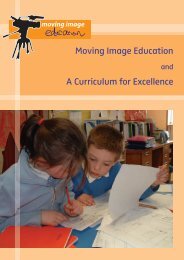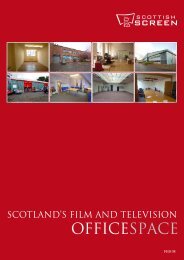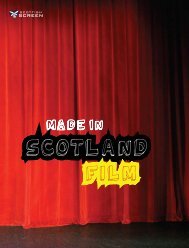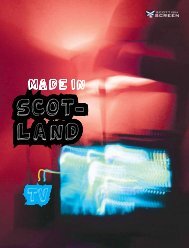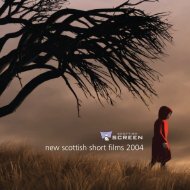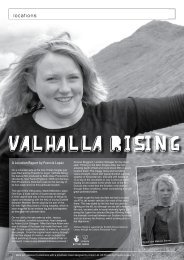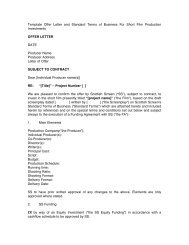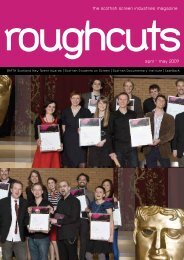Evaluation - Scottish Screen
Evaluation - Scottish Screen
Evaluation - Scottish Screen
You also want an ePaper? Increase the reach of your titles
YUMPU automatically turns print PDFs into web optimized ePapers that Google loves.
8. CONCLUSIONS AND RECOMMENDATIONS<br />
8.1 Conclusions<br />
In terms of <strong>Scottish</strong> <strong>Screen</strong>’s aims for the Professional Development Programme, there are<br />
two overlapping but distinct strands. The first of these is MIE itself and concerns the<br />
relationship between MIE and traditional concepts of literacy, an extended concept of literacy<br />
to include visual media literacy and pedagogy. The second strand refers to the Professional<br />
Development itself and considers its effectiveness as a model for introducing MIE into<br />
schools and nurseries, the implications for schools and local authorities and sustainability. In<br />
order to pursue how MIE and the PDP were pursued in each of the initiatives, the purpose<br />
and aims of the evaluation, as detailed in chapter 1, can now be addressed.<br />
Specifically, <strong>Scottish</strong> <strong>Screen</strong> identified the purposes of the evaluation as identifying the<br />
particular contributions that moving image education can make to learning, especially its<br />
contribution to the four ‘capacities’ outlined in A Curriculum for Excellence. <strong>Scottish</strong> <strong>Screen</strong><br />
also identified the particular aims of the evaluation as being about the impact of the MIE<br />
initiatives on teachers and pupils and the effectiveness of the PDP as a model for the<br />
introduction of MIE into schools and nurseries.<br />
In terms of A Curriculum for Excellence, there is clear agreement among teachers and<br />
headteachers that MIE provides a context in which each of the four capacities develops<br />
naturally. The active participation required of pupils, the necessity to work together in order<br />
to achieve shared goals, the negotiation, analysis, need for justification and sheer enjoyment<br />
inherent in MIE build within pupils the confidence and responsibility to achieve success and<br />
feelings of effectiveness.<br />
The impact of MIE on teachers and learners within the initiatives in this study was<br />
considerable. Teachers and pupils alike reported significant improvements in children’s<br />
talking and listening skills. Writing was also identified as an aspect of pupils’ performance<br />
that was also enhanced through involvement with MIE. There was less certainty regarding<br />
the impact of MIE on reading.<br />
Teachers and pupils have also become aware of the value and necessity of an extended<br />
concept of literacy. They have developed a realisation that in the twenty first century,<br />
traditional concepts of literacy as applying only to verbal communication are no longer<br />
adequate and the visual and digital media have become equally important in our everyday<br />
lives.<br />
In addition to increased awareness of film, digital and other moving images, teachers have<br />
come to realise the pedagogical opportunities that MIE presents. These can be explained as<br />
developing through theories of learning based on communities of learners, activity theory<br />
and collective competence. In terms of current discourses in schools, they might be<br />
understood as relating to active learning, critical skills and formative assessment. As with A<br />
Curriculum for Excellence, MIE is a context in which each of these occurs naturally. Indeed,<br />
in some schools and for some teachers in each of the initiatives, the pedagogical<br />
opportunities have become the most valued aspects of MIE. Evidence from the teacher<br />
interviews and observations indicates that teachers appear to have taken what they learned<br />
53





